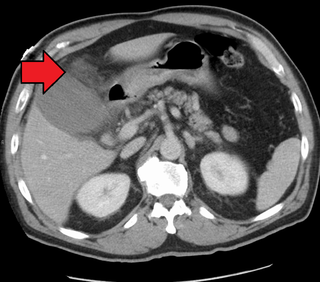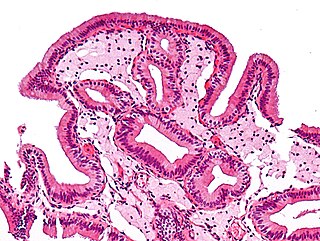Michael W. Mulholland, MD, Ph.D. is a Professor of Surgery and the Chairman of the Department of Surgery at the University of Michigan. [1]
Michael W. Mulholland, MD, Ph.D. is a Professor of Surgery and the Chairman of the Department of Surgery at the University of Michigan. [1]
Mulholland was educated at Northwestern University in Evanston, Illinois and gained his medical degree from Northwestern University Medical School in Chicago. This was followed by postgraduate training in General Surgery at the University of Minnesota in Minneapolis, where he also gained his Ph.D. From 1985-1988, Mulholland was an Assistant Professor of Surgery at the University of Washington in Seattle. He joined the faculty at the University of Michigan in 1988. Dr. Mulholland is now the Frederick A. Coller Distinguished Professor of Surgery, and Chair, Department of Surgery
Mulholland's area of specialization is in laparoscopic surgery and surgical endoscopy, including the treatment of pancreatic and biliary cancer, neoplastic diseases of the gastrointestinal tract, biliary reconstruction and inflammatory bowel disease. His research interests include the neurocrine control of pancreatic exocrine secretion and enteric neurobiology.
Mulholland has co-authored or edited several books and was elected as a member of the National Academy of Sciences in 2004.

Gastroenterology is the branch of medicine focused on the digestive system and its disorders.

Hepatology is the branch of medicine that incorporates the study of liver, gallbladder, biliary tree, and pancreas as well as management of their disorders. Although traditionally considered a sub-specialty of gastroenterology, rapid expansion has led in some countries to doctors specializing solely on this area, who are called hepatologists.

In vertebrates, the gallbladder, also known as the cholecyst, is a small hollow organ where bile is stored and concentrated before it is released into the small intestine. In humans, the pear-shaped gallbladder lies beneath the liver, although the structure and position of the gallbladder can vary significantly among animal species. It receives and stores bile, produced by the liver, via the common hepatic duct, and releases it via the common bile duct into the duodenum, where the bile helps in the digestion of fats.

Cholecystitis is inflammation of the gallbladder. Symptoms include right upper abdominal pain, pain in the right shoulder, nausea, vomiting, and occasionally fever. Often gallbladder attacks precede acute cholecystitis. The pain lasts longer in cholecystitis than in a typical gallbladder attack. Without appropriate treatment, recurrent episodes of cholecystitis are common. Complications of acute cholecystitis include gallstone pancreatitis, common bile duct stones, or inflammation of the common bile duct.

Cholecystectomy is the surgical removal of the gallbladder. Cholecystectomy is a common treatment of symptomatic gallstones and other gallbladder conditions. In 2011, cholecystectomy was the eighth most common operating room procedure performed in hospitals in the United States. Cholecystectomy can be performed either laparoscopically, or via an open surgical technique.

Tomica Milosavljević is a Serbian doctor and politician. He served as Minister of Health in the Government of Serbia under four Prime Ministers with the total span of seven years. He is also employed as a full professor at the University of Belgrade and works in the Clinical Centre of Serbia in Belgrade.

Gallbladder diseases are diseases involving the gallbladder and is closely linked to biliary disease, with the most common cause being gallstones (cholelithiasis).
Markus Wolfgang Büchler is a German surgeon and university full professor. He specialises in gastrointestinal, hepatobiliary and transplant surgery, and is especially known for pioneering operations on the pancreas.

John Benjamin Murphy, born John Murphy was an American physician and abdominal surgeon noted for advocating early surgical intervention in appendicitis appendectomy, and several eponyms: Murphy’s button, Murphy drip, Murphy’s punch, Murphy’s test, and Murphy-Lane bone skid. He is best remembered for the eponymous clinical sign that is used in evaluating patients with acute cholecystitis. His career spanned general surgery, orthopedics, neurosurgery, and cardiothoracic surgery, which helped him to gain international prominence in the surgical profession. Mayo Clinic co-founder William James Mayo called him "the surgical genius of our generation".

Sphincter of Oddi dysfunction refers to a group of functional disorders leading to abdominal pain due to dysfunction of the Sphincter of Oddi: functional biliary sphincter of Oddi and functional pancreatic sphincter of Oddi disorder. The sphincter of Oddi is a sphincter muscle, a circular band of muscle at the bottom of the biliary tree which controls the flow of pancreatic juices and bile into the second part of the duodenum. The pathogenesis of this condition is recognized to encompass stenosis or dyskinesia of the sphincter of Oddi ; consequently the terms biliary dyskinesia, papillary stenosis, and postcholecystectomy syndrome have all been used to describe this condition. Both stenosis and dyskinesia can obstruct flow through the sphincter of Oddi and can therefore cause retention of bile in the biliary tree and pancreatic juice in the pancreatic duct.
Professor Michael J. McMahon is a surgeon specialising in upper gastrointestinal surgery, particularly the pancreas and biliary tract.
Olivier James Garden, is a British surgeon and academic. He holds the Regius Chair of Clinical Surgery at the University of Edinburgh and the president of the International Hepato-Pancreato-Biliary Association from 2012 to 2014. Garden performed Scotland's first liver transplant in Edinburgh in 1992 and founded the Scottish Liver Transplant Programme.
J. Michael Henderson is an American general and transplant surgeon, with experience in portal hypertension, liver transplantation, and pancreatic disease. Henderson is the Chief Medical Officer at the University of Mississippi Medical Center since 2015. Prior to this role, he was with the Cleveland Clinic from 1992–2014. He was the Chairman of the Department of General Surgery and Director of the Transplant Center for 12 years, and was the Chief Quality Officer for the Cleveland Clinic’s 10-hospital system for eight years.

Alexey Nikolaevich Severtsev – a Russian doctor of medicine sciences, professor in the hospital surgery department of the medical faculty in Pirogov Russian National Research Medical University and the chief surgeon of a chain of clinics “MEDSI”.

Morio Kasai was a Japanese surgeon who had a strong interest in pediatric surgery. While Kasai went into practice at a time when pediatric surgery was not an established subspecialty, much of his clinical and research work was related to the surgical care of children. He is best known for devising a surgical procedure, the hepatoportoenterostomy, to address a life-threatening birth defect known as biliary atresia. The modern form of the operation is still known as the Kasai procedure.
James Michael Millis is an American academic and surgeon specializing in pediatric and adult liver transplantation. He is Professor of Surgery and Vice Chair of Global Surgery at University of Chicago. He is also the director of Clinical Leadership Development Fellowship and Hepatobiliary Surgery at the University of Chicago Medical Center. He is known for developing new techniques of liver surgery that improved outcomes following liver transplantation and non transplant liver and biliary tract surgery.

Nuru Bayramov is a surgeon, a professor and head of first department of surgical diseases in Azerbaijan Medical University.

Hobart Ansteth Reimann (1897–1986) was an American virologist and physician. Reimann made contributions to medicine with his 1938 landmark article on atypical pneumonia ; and articles on periodic disease and the common cold (1948). He was active in the testing of streptomycin against typhoid, with "the first publicly reported successful experiments."
John Lemuel Cameron (1936-) is an American surgeon. He is the Alfred Blalock Distinguished Service Professor of Surgery at the Johns Hopkins School of Medicine.